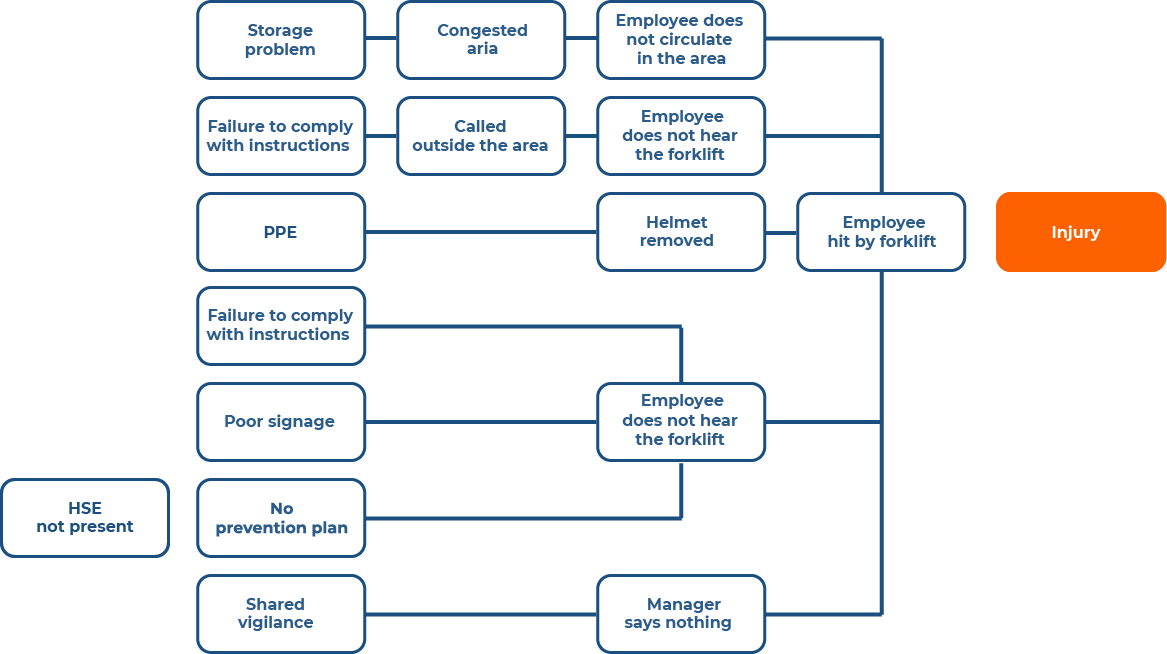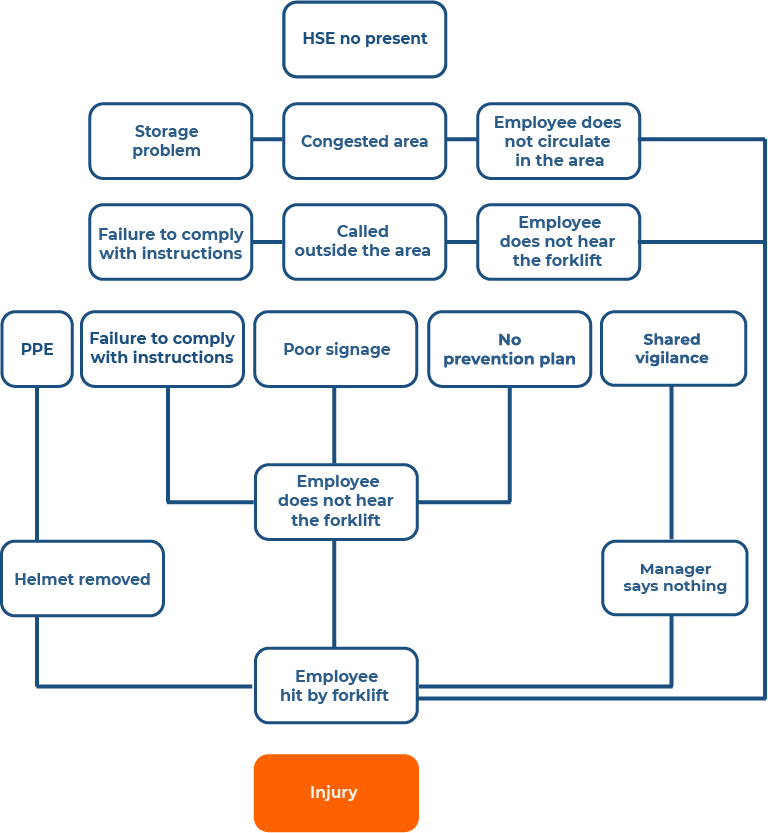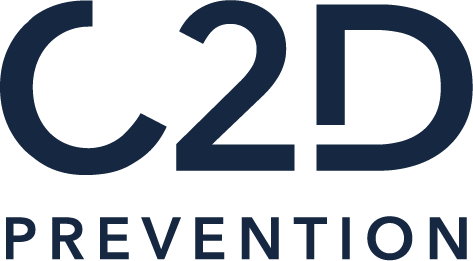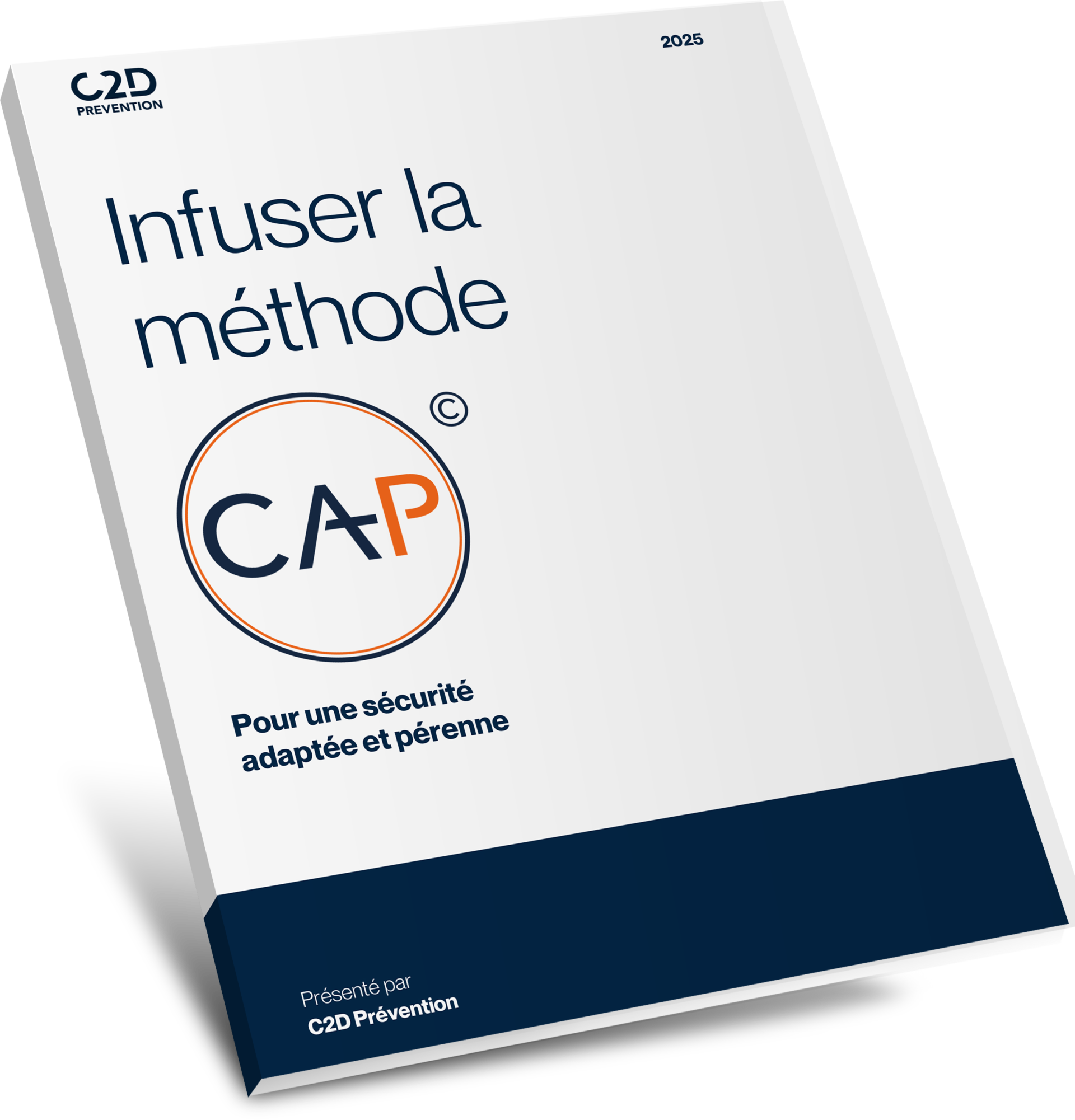Home > Tailored Support
Tailored Support

Custom
Interventions
The challenges related to occupational risk prevention and the development of a well-managed health & safety culture vary from one company to another. Some organizations require comprehensive support to structure their prevention approach, while others seek targeted solutions for specific issues.
C2D Prevention offers interventions adapted to each need, combining organizational and technical expertise with a human-centered approach.
Integrated into Phase 3 of the CAP Method,
our services are designed based on your company’s objectives and needs:
Two types of support:

Comprehensive support:
assessment of current practices, action plan development, and long-term follow-up.

Targeted support:
interventions tailored to specific needs, detailed in the two categories below.
Targeted Missions for Specific Needs

These customized interventions respond to clearly identified needs, such as:
Managerial Training, including:
Refresher or awareness sessions on roles and responsibilities across the entire management line.
Practical tools for both macro and micromanagement to infuse and anchor the expected safety culture (e.g.: how to lead and practice effective ritual techniques like Job Briefings, Safety Talks, Gemba Walks, VCS…).
Overview of legal obligations and managerial techniques to ensure employees operate within both legal and ethical safety frameworks.
Accident Investigation
Establishing a Root Cause Tree after an accident. (see “Root Cause Tree” reference).
A detailed accident analysis allows for identification of primary, secondary, and even tertiary causes, using simple, effective methods (e.g.: the 5M model or the ITAMAMI method).
This process helps avoid superficial conclusions and enables the implementation of corrective actions—human, organizational, and technical—to reduce the risk of recurrence.
It also enhances the safety maturity of all stakeholders involved.
Effective Facilitation of Safety Talks
A well-conducted safety conversation (e.g. Safety Talk, Safety Quarter-Hour, VCS…) should:
Capture team attention,
Encourage discussion based on real workplace risks, past incident analyses, and shared experiences,
Foster transparency and team engagement by giving employees an active role in identifying and reducing risks.
Job Briefing (or Pre-Job Briefing)
Grounded in neuroscience insights, job briefing is an essential and powerful tool for ensuring individual and team safety.
It enables collective awareness of both inherent and task-specific risks and helps define the means to control them.
This practice clarifies expectations, provides clear instructions, and strengthens internal communication. It contributes to reducing errors, better managing the unexpected, improving performance, and preventing workplace accidents.
HSE Support
What are their roles and responsibilities?
How can HSE professionals, as technical experts, communicate effectively with teams on the ground?
How can we trigger dopamine instead of cortisol when we talk about safety?
These missions may be standalone or embedded in a broader program of awareness and continuous training, enabling progressive adoption of best practices across the company.
Root Cause Tree
The Root Cause Tree is a structured, in-depth, and visual method used to identify the sequence of causal events leading to the incident or accident under investigation.
Each contributing factor is analyzed, from the most immediate to the most underlying, enabling a clear understanding of both the root origins and the specific circumstances that triggered the event.
Step 1
Initial Investigation Phase :
Identify key facts and contributing factors
Gather information systematically to highlight the causal and consequential aspects of the incident or accident
Build the Root Cause Tree: Create a clear and concise diagram outlining the key elements observed
STEP 2
In-Depth Investigation Phase :
Analyze and integrate deeper causes into the diagram
Identify human and organizational causal and consequential factors
STEP 3
Proposal of Corrective Actions:
Develop concrete, actionable solutions to address the identified weaknesses
Aim to prevent recurrence and improve future risk management
Objectives of Building a Root Cause Tree
Prevent recurring hazardous situations:
Provide targeted and sustainable corrective actions to avoid similar incidents in the future.
Strengthen the safety culture:
Engage teams in a collaborative and educational process that enhances their understanding of risks.
Improve organizational practices:
Identify weaknesses in processes or working conditions and implement tangible improvements.
Sustain and reinforce company culture:
Promote a safer and more effective work environment through continuous learning and shared responsibility.
Exemple


Safety Events and Awareness Days
Our interactive and engaging safety days combine various complementary interventions tailored to your identified needs.
Thematic Areas
These awareness sessions are organized around five key thematic domains:
1Risk Analysis & Management
- Raising awareness of key messages related to your company’s health and safety culture
- Learning best practices to prevent both physical and psychological occupational risks, with the goal of building an effective health and safety culture
Example topics include: Foundations of safety culture, Legal roles and responsibilities, Shared vigilance, Communication breakdowns, Accident analysis, etc.
2Physical Protection
Covers risks that directly affect the worker’s physical health in daily operations.
Examples of issues addressed: Noise hazards, Musculoskeletal disorders (MSDs), Chemical exposure, Hand injuries, Electrical risks, Risks related to machinery or vehicle operation
3Cognitive Protection
- Understanding how the brain works, its needs, and its limits
- Analyzing behavior in everyday work situations (e.g., multitasking, mental overload, distraction, decision-making process)
- Providing practical tools to change behaviors and reduce the risk of accidents
4Psychological Protection
Objectives: Preserve individual and collective mental balance in the face of professional challenges, Strengthen adaptability, Prevent psychosocial risks (PSRs), Support the management of stress and tension
Example workshops: Stress management, Sleep and recovery optimization, Emotional self-regulation, etc.
5Development: “Well-being & Performance (QLWC)”
Objective:
Go beyond risk prevention to actively evolve the company’s health and safety culture.
By integrating employee expectations and fostering engagement, these sessions help create working conditions that boost involvement and collective efficiency, enabling organizations to gain agility and resilience.
Example topics: Workplace well-being, Conflict management, The role of autonomy, Mental health, Burnout prevention, etc.
Flexible Formats
These five content areas can be delivered in three adaptable formats,
which can be mixed and matched according to your organizational needs.
Brochure
You can download the attached brochure
for a complete overview of our services.
All support is fully personalized to match your specific risks, targeted audiences, session formats, and number of participants.
Contact our team to co-design a program
that fully meets your goals and operational needs.

